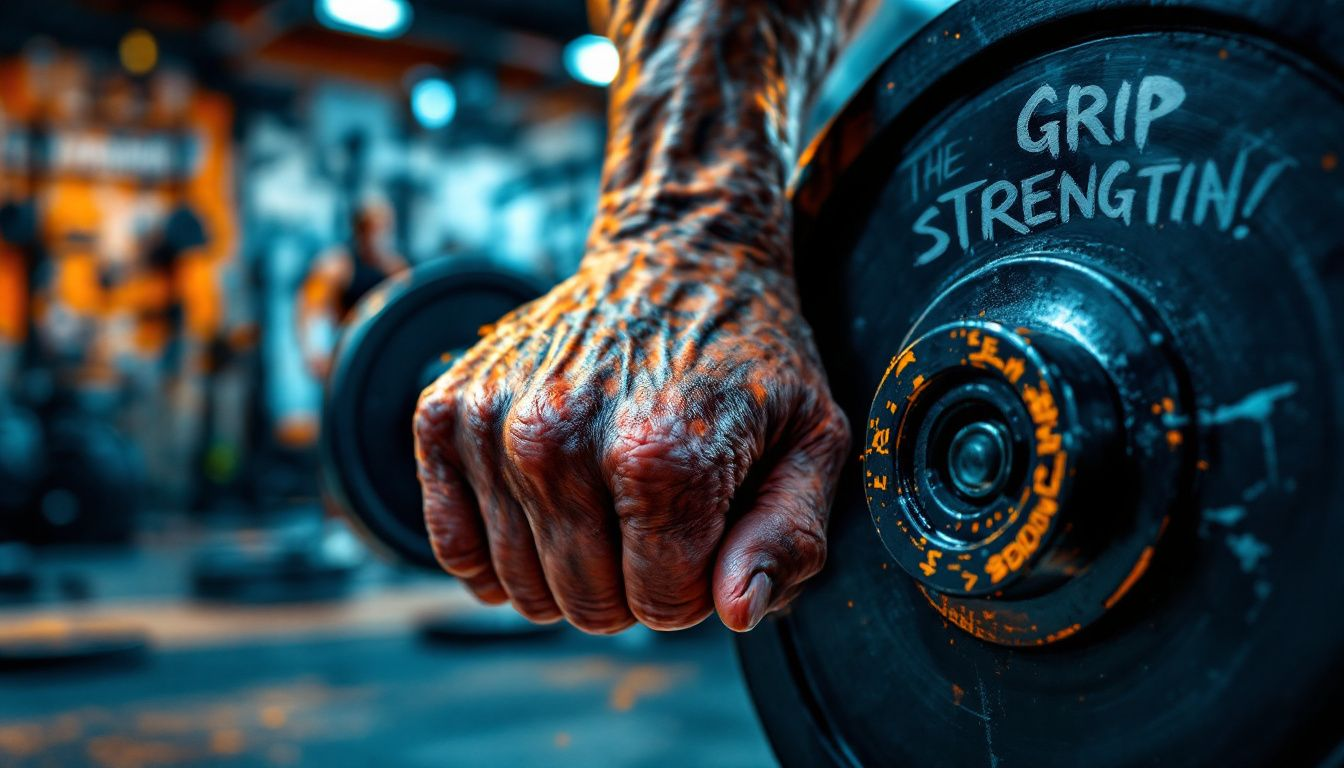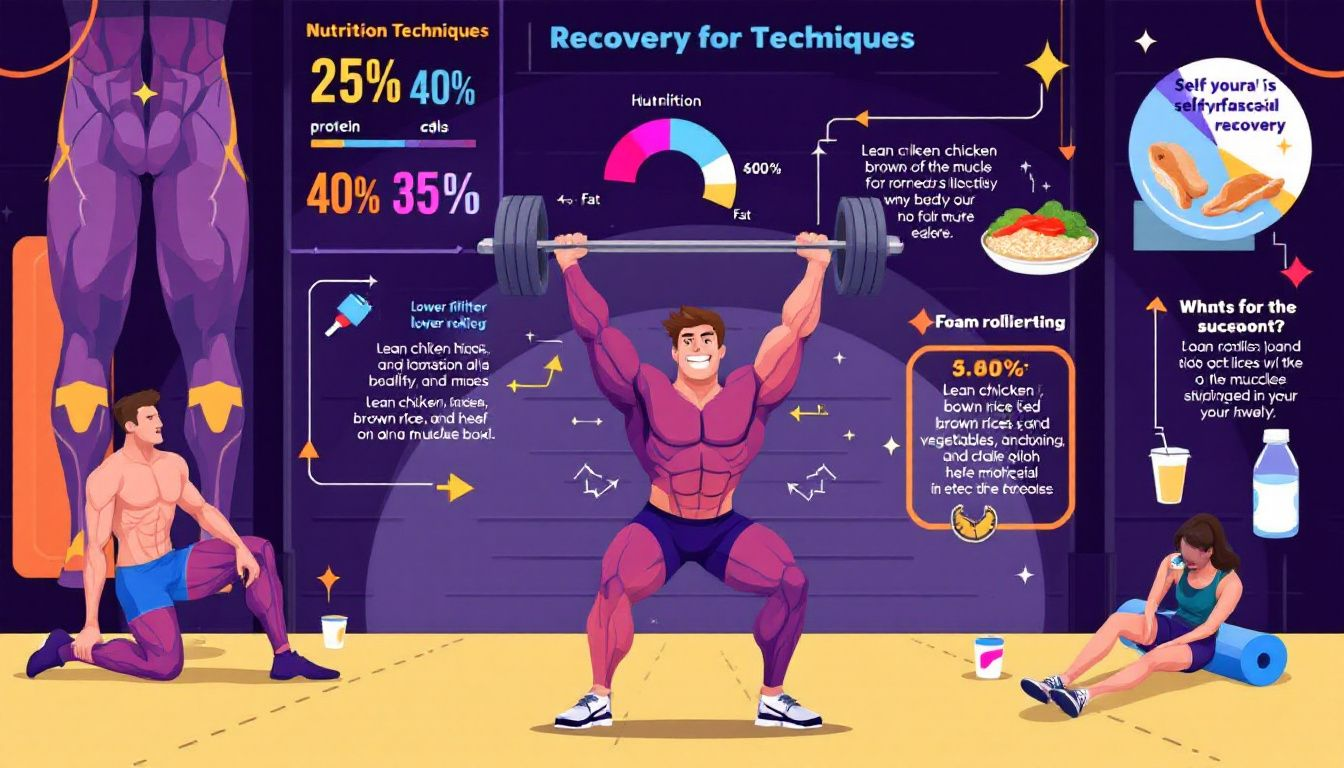
How Many Deadlifts Should I Do?
Share
Wondering how many deadlifts should I do? The answer varies based on your goals. Whether it’s building strength, muscle growth, or endurance, this guide will help you find the right number of reps and sets.
Key Takeaways
-
Deadlift repetitions should align with training goals: 1-5 reps for strength, 6-12 for hypertrophy, and 15+ for endurance.
-
Deadlift frequency must be tailored to experience level: beginners benefit from 1 session per week, intermediates from 2-3, and advanced lifters can handle 4-5 sessions per week.
-
Proper form and gradual progression are critical to avoiding injuries; common mistakes include using too much weight too early and improper lifting techniques.
Determining Your Deadlift Reps Based on Goals

The number of deadlift repetitions you should do varies based on your training goals. Consider whether you aim to build strength, increase muscle hypertrophy, or improve endurance and conditioning, as each of these requires a different approach to the number of repetitions per set.
For strength training, fewer reps with heavier weights are key. Muscle hypertrophy benefits from moderate repetitions, while endurance and conditioning require higher reps. Here are the specifics of each goal to determine the optimal deadlift reps for your needs.
Building Strength
If your primary goal is building strength, focusing on lower reps with heavier weights is optimal. Performing 1-5 repetitions per set ensures you’re lifting substantial loads, crucial for stimulating key muscle groups involved in the deadlift, including the upper and mid-back, glutes, hamstrings, and erector spinae.
A typical strength training session might consist of 3-6 sets of 3-6 reps, progressively increasing the weight over time. Prioritizing quality and technique for each rep prevents injuries and maximizes effectiveness in resistance training.
Consistency and proper form are vital for long-term strength gains.
Muscle Hypertrophy
For increasing muscle size, moderate repetition ranges are ideal. Performing 6-12 reps per set balances lifting enough weight to stimulate muscle growth with performing enough reps to induce hypertrophy.
Beginners should start with 6-8 reps per set to learn proper form and gradually increase as they become more comfortable. This approach enhances muscle mass while also improving overall strength and endurance, contributing to long-term fitness goals.
Endurance and Conditioning
Higher repetition ranges enhance muscular endurance. Performing over 15 reps per set improves endurance and conditioning by focusing on the muscle’s ability to sustain prolonged activity, particularly useful for athletes and individuals aiming to improve overall stamina with more reps.
High-rep training sessions should be integrated with compound exercises and other exercises to ensure a balanced workout and prevent overuse injuries. Maintaining good form throughout each rep avoids strain and injury.
The Role of Individual Factors in Deadlift Volume

Determining your deadlift volume requires considering individual factors such as genetics, training history, and fitness level. These personal aspects significantly influence how your body responds to training and what volume is optimal for you.
Aligning your deadlift frequency with your personal fitness goals and individual characteristics can optimize your training outcomes. Here’s how these factors shape your deadlift routine.
Training History
Your training history provides valuable insight into how much volume your body can handle. Understanding your past experiences helps tailor the appropriate frequency and intensity for your current routine.
For example, an experienced lifter with a solid training history might handle higher frequencies and volumes better than a beginner. This knowledge allows for more informed decisions about how to progress and avoid overtraining.
Genetic Factors
Genetics play a crucial role in determining your response to strength training. Genetic predispositions can lead to variations in muscle group fiber distribution, impacting both strength and hypertrophy.
Understanding these genetic factors helps tailor your training approach for optimal results.
Experience Level
Your experience level is another critical factor in determining deadlift frequency. Beginners should start with one session per week to focus on proper form and gradual progression, laying a solid foundation for future training.
Intermediate lifters can benefit from 2-3 sessions per week, incorporating variations to target different muscle groups and prevent overtraining. Advanced lifters, with their higher tolerance for volume and intensity, can safely increase their training frequency to 4-5 times per week, utilizing varied loads and techniques to maximize strength gains.
Understanding Deadlift Frequency

Deadlift frequency is crucial for achieving your fitness goals and depends on your experience level. Beginners, intermediates, and advanced lifters all require different frequencies to optimize their training outcomes.
To ensure sustainable training, balance your routine with adequate recovery time, goal setting, and appropriate frequency adjustments. Here are the recommended frequencies for each experience level.
Beginners
For beginners, deadlifting once a week is ideal. This frequency allows new lifters to focus on developing proper technique, lifting manageable weights, and gradually progressing as their form and comfort improve.
Intermediate Lifters
Intermediate lifters should aim for 2-3 deadlift sessions per week. This frequency effectively builds strength and improves technique without leading to overtraining. Incorporating variations in their deadlift routine can help target different muscle groups and keep workouts engaging.
By adjusting volume and intensity, intermediate lifters can continue making progress while avoiding plateaus and burnout. Listening to your body and ensuring adequate recovery between sessions is crucial.
Advanced Lifters
Advanced lifters can safely increase their deadlifting frequency to 4-5 times per week. This approach allows for varied loads and techniques, maximizing strength gains and overall performance.
However, balancing high frequency with adequate recovery is crucial to prevent overtraining and injuries. Advanced lifters should pay close attention to their body’s signals and adjust their routine accordingly to maintain peak performance and longevity in their training.
Incorporating Different Deadlift Variations

Including different deadlift variations in your training program is essential for comprehensive strength development. Variations keep workouts exciting and challenge muscles in different ways, preventing monotony and overuse injuries.
Popular deadlift variations include barbell deadlifts, Romanian deadlifts, and resistance band deadlifts. Each targets different muscle groups and offers unique benefits. Here are the specifics of these variations.
Barbell Deadlift
The barbell deadlift is a staple in strength training, focusing on lifting a loaded barbell off the ground to the waist. This compound exercise targets multiple muscle groups, including the hamstrings, glutes, upper back, traps, adductors, and hip muscles.
Correct form and technique are critical when performing the barbell deadlift to maximize effectiveness and minimize injury risk. Ensure the bar is close to your body, your feet are positioned hip-width apart, and your shoulders are aligned directly above the bar.
Romanian Deadlift
The Romanian deadlift emphasizes a straight-legged approach, targeting the posterior chain significantly. This variation focuses more on the hip hinge movement, making it an excellent exercise for hamstring and glute development.
Maintaining proper technique is crucial to avoid injuries and maximize the effectiveness of the Romanian deadlift. Various equipment, such as kettlebells, can be used for this exercise to add variety to your routine.
Resistance Band Deadlift
Resistance band deadlifts can enhance stability and provide an alternative means of engaging the hamstrings and glutes. This variation is particularly useful for those looking to add variety to their training without the need for heavy weights.
To perform a resistance band deadlift, stand on the band and bend your chest towards the ground, then drive back up, effectively engaging multiple muscle groups. This exercise can be a great addition to any deadlift routine.
Recovery and Its Importance in Deadlifting

Recovery is a critical component of any deadlift routine. Adequate recovery time after deadlifting helps prevent injuries and ensures optimal performance in subsequent training sessions. Balancing workout intensity with appropriate recovery time maximizes performance and prevents fatigue.
Let’s explore the key aspects of recovery: listening to your body, nutrition, and rest.
Listening to Your Body
Your body is a crucial indicator of your physical condition and performance needs. Recognizing signs of fatigue and taking rest days when needed can improve overall performance and recovery.
Nutrition and Rest
Proper nutrition plays a vital role in recovery, enhancing both muscle repair and overall performance. Effective recovery involves not just rest but also consuming the right nutrients to fuel muscle growth and repair.
Rest and recovery strategies, combined with adequate nutrition, are key for maximizing training results and performance. Ensuring you get enough sleep and maintaining a balanced diet will support your recovery efforts and help you achieve your fitness goals.
Common Mistakes to Avoid When Deadlifting
Avoiding common mistakes while deadlifting is essential for preventing injuries and ensuring progress. Prioritizing proper form, avoiding overextension, and not lifting too much weight too soon are critical aspects to consider to deadlift properly.
Let’s delve into these common mistakes and how to avoid them to ensure a safe and effective deadlift routine.
Improper Form
Performing barbell deadlifts with correct form maximizes effectiveness and minimizes injury risk. Ensuring that hips are neither too high nor too low is crucial for effective power transfer during the deadlift.
Feet should be positioned hip-width apart to optimize balance and power during the lift, and shoulders must be aligned directly above the bar to maintain a balanced center of gravity.
Overextending at the Top
Overextending at the top of the deadlift significantly increases the risk injury of spine injuries. Maintaining proper alignment throughout the lift avoids compromising form and placing excessive strain on the spine.
Focus on keeping your movements controlled and precise to prevent overextension.
Using Too Much Weight Too Soon
One of the most common mistakes lifters make is using too much weight too soon. Progressive overload is essential for maximizing strength gains, but it should be approached gradually to avoid injuries. Safe progression strategies include gradually increasing weights, monitoring current training volume, and incorporating recovery periods.
Ignoring recovery time can lead to suboptimal performance and injuries. Allowing your muscles adequate time to repair and grow ensures you can lift heavier weights safely and effectively in the future.
How to Progress Safely in Your Deadlift Routine
Progressing safely in your deadlift routine involves gradually increasing the weight, incorporating accessory exercises, and monitoring training intensity. This structured approach helps prevent injuries and ensures continuous improvement.
Let’s explore these strategies in more detail to help you advance your deadlifting safely and effectively.
Gradual Increase in Volume
A gradual increase in volume is essential for safe and effective deadlifting progression. Incorporate a structured plan to increase sets and reps over time, ensuring that the body adjusts adequately. This method not only enhances performance but also promotes longevity in your fitness journey.
Gradually increasing the weight you lift is also crucial for building strength and avoiding injuries. Following these principles will help you achieve steady progress while maintaining safety.
Adding Accessory Exercises
Accessory exercises play a crucial role in supporting deadlift progress by strengthening the muscles involved in the lift. Incorporating other exercises that target the same muscles used in deadlifts can help avoid monotony and keep the training routine engaging.
Examples of effective accessory exercises include rack pulls, front squats, pull-ups, and various bench and barbell presses, as well as row variations. These exercises can enhance your overall strength and support your deadlift routine.
Monitoring Training Intensity
Balancing training intensity with adequate recovery periods is crucial for achieving optimal performance and fitness results. Listening to your body helps to pay attention to signs of fatigue and soreness, indicating when to allow more recovery time.
Gradually increasing deadlift volume and intensity without risking injury is essential. Incorporate methods for safely increasing sets and reps over time to ensure continuous progress. Accessory lifts can also help manage overall training load and support deadlift progress.
Summary
In summary, the number of deadlifts you should perform depends on your specific fitness goals, individual factors, and experience level. By understanding and implementing the optimal rep ranges for strength, hypertrophy, and endurance, you can tailor your deadlift routine to achieve the best results.
Remember to incorporate different deadlift variations, prioritize recovery, avoid common mistakes, and progress safely. With these expert tips, you can optimize your deadlift training and reach your fitness goals. Stay consistent, listen to your body, and enjoy the journey to becoming a stronger and more resilient lifter.
Frequently Asked Questions
How many deadlifts should I do for strength gains?
For optimal strength gains, aim for 1-5 reps per set using heavier weights. This approach will effectively enhance your strength.
What is the recommended rep range for muscle hypertrophy?
The recommended rep range for muscle hypertrophy is 6-12 reps per set. This range effectively promotes muscle growth.
How often should beginners deadlift?
Beginners should deadlift once a week to concentrate on mastering their form and progressively improving. This ensures safe and effective training without overloading the body.
Why is recovery important in deadlifting?
Recovery is crucial in deadlifting because it enables muscle repair and growth, which minimizes the risk of injury and enhances performance in future workouts. Prioritizing recovery leads to better results and a safer lifting experience.
What are some common mistakes to avoid when deadlifting?
Avoid improper form, overextending at the top, and lifting too much weight too soon. Prioritizing correct technique and gradual weight increases is crucial for preventing injuries.
